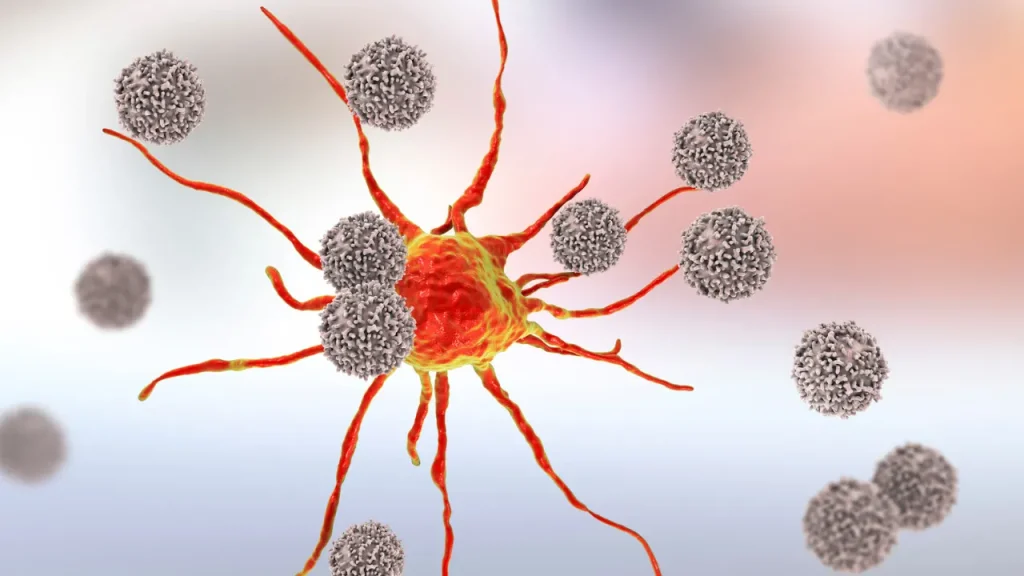Many civilizations have a long history of using cajeput oil, which is made from the leaves of the Melaleuca cajuputi tree. Scientific research into its possible health advantages has been sparked due to its distinctive chemical makeup and therapeutic qualities. In this article, we will thoroughly anazlyze the properties of cajeput oil in terms of its composition, health advantages, recommended dose, side effects, probable drug interactions, and appropriate applications. We will also examine the chemistry of cajeput oil as well as the physiological processes through which it affects the body and the brain.
You May Also Like:
Finding the Best Supplements for Brain Fog After COVID: 5 Top Brands Reviewed
Cajeput Oil: Benefits, Dosage, Side Effects, Drug Interactions, and Other Important Information is an original (NootropicsPlanet) article.
Nature of Cajeput Oil
The leaves of the Melaleuca cajuputi tree are steam-distilled to produce cajeput oil, a volatile essential oil. The oil is light yellow or colorless and has a distinctive fresh, camphoraceous smell. Among others, cineol (also known as eucalyptol), pinene, terpinene, terpineol, and limonene are some of the cajeput oil’s primary chemical components. These substances help to explain their special qualities and possible health advantages.
Health Benefits of Cajeput Oil
- Respiratory Health: Cajeput oil is known for its expectorant and decongestant properties, which make them helpful for respiratory disorders including cough, cold, bronchitis, and sinusitis. The bronchodilator properties of cajeput oil’s cineol content facilitate easier breathing and can reduce congestion.
- Effects on Pain Relief and Inflammation: Cajeput oil has analgesic and anti-inflammatory properties that may be linked to its numerous chemical components. It can be used topically to treat headaches, bug bites, and joint and muscular discomfort. Cajeput oil can also help to lessen inflammation linked to diseases like rheumatism and arthritis.
- Antimicrobial Activity: Cajeput oil is a powerful natural cure against a variety of infections, including bacteria, fungus, and viruses, thanks to its antimicrobial properties. It can be used as a disinfectant and to treat wounds, acne, and skin infections. To grasp its antibacterial mechanisms completely, further study is necessary.

Chemistry of Cajeput Oil
Cajeput oil’s complex chemical makeup gives it its distinctive properties. Cineol (eucalyptol), pinene, terpinene, terpineol, and limonene are a few of the key components in cajeput oil. The scent, therapeutic effects, and possible health advantages of the oil are all influenced by these constituents.
One of the main ingredients in cajeput oil, cineol (also known as eucalyptol), is what gives the oil its distinctive camphoraceous smell. It has expectorant properties that assist to loosen and release mucus, which benefits respiratory disorders. The antibacterial properties of cineol also contribute to the oil’s ability to fight infections.
Monoterpenes that may be detected in cajeput oil include pinene, terpinene, and limonene. They have anti-inflammatory properties that add to the lovely scent of the oil. These substances are able to lessen pain and inflammation brought on by ailments including rheumatism and arthritis.
Another substance found in cajeput oil called terpineol is well-known for its sedative and calming properties. It can enhance the relaxing effects of the oil and make it effective for lowering tension and fostering relaxation.
Physiological Properties of Cajeput Oil
Cajeput oil’s physiological properties are varied and include a number of different bodily routes. Despite the paucity of scientific study on the precise processes behind cajeput oil’s actions, the following are some possible modes of action:
- Respiratory System: Cajeput oil has positive benefits on the respiratory system due to its high cineol (eucalyptol) concentration. By relaxing and widening the airways, cineol works as a bronchodilator to improve breathing and clear congestion. Additionally, it can have an expectorant property that makes it easier to clear the respiratory system of mucus and phlegm.
- Analgesic and Anti-inflammatory Effects: Cajeput oil’s inclusion of pinene, terpinene, and limonene implies that it can have analgesic and anti-inflammatory effects. These substances can interact with receptors that are involved in pain perception and inflammation, resulting in a decrease in both. To comprehend the processes behind these impacts completely, further study is necessary.
- Antibacterial Activity: Cajeput oil has broad-spectrum antibacterial properties, which can be related to the interactions between its chemical components. Components of the oil, such as cineol and terpinene, have shown antibacterial action against viruses, fungi, and bacteria. They can obstruct cell membranes, hinder vital enzymes for microbial survival, or hinder microbial development.
- Psychological and Relaxing Properties: Terpineol, a component of cajeput oil, has been linked to having sedative and calming properties. . It can interact with brain neurotransmitter systems that are involved in relaxing and lowering anxiety, such as gamma-aminobutyric acid (GABA) receptors. This process helps cajeput oil’s ability to encourage relaxation and reduce tension.
- Possible Interactions: It is important to note that cajeput oil’s physiological properties are complex and can entail interactions with several bodily targets. Studies in science are being conducted to clarify these pathways and give us a better knowledge of how cajeput oil affects the body and brain.

Optimal Dosage of Cajeput Oil
The ideal dose of cajeput oil must be calculated carefully, taking into account your age, general health, and planned usage, among other things. Cajeput oil must be diluted before use since it is quite potent. Before administering cajeput oil topically, it is recommended to combine 3–5 drops of the oil with 1 ounce (30 mL) of a carrier oil, such as coconut or jojoba. A few drops in a diffuser or in some hot water should be sufficient when using cajeput oil for inhalation. However, it is always a good idea to speak with your doctor before taking any essential oil, including cajeput oil.
Side Effects of Cajeput Oil
Despite the fact that cajeput oil is typically thought to be safe for topical and inhalation usage, some people can have skin sensitivity or allergic responses. Before using it often, it is advised to do a patch test on a small area of your skin. Additionally, cajeput oil should not be consumed since it can result in nausea, vomiting, or other unpleasant side effects. Children and women who are pregnant or nursing should use cajeput oil with care and see a doctor before doing so.

Potential Substance Interactions
Like other essential oils, cajeput oil can interact with certain drugs or chemicals. It is vital to be knowledgeable about these possible interactions. Cajeput oil, for instance, may intensify the effects of sedatives or other drugs that slow the central nervous system. Before consuming cajeput oil, if you are using such drugs, you should speak with your doctor.
Like other essential oils, cajeput oil can interact with certain drugs or chemicals. To ensure safe and responsible usage, it is essential to be aware of these possible interactions. Consider the following significant drug interactions:
- Chemicals that Sedate or Calm the Central Nervous System: Cajeput oil can improve the effects of drugs or chemicals that Sedate or Calm the Central Nervous System. Examples include alcohol, benzodiazepines, opioids, and sleep aids. Cajeput oil can enhance the likelihood of extreme sleepiness, dizziness, or loss of coordination when used with certain medications. If you are using such drugs, it is advised that you speak with a medical expert.
- Anticoagulant Drugs: Cajeput oil has a modest anticoagulant effect, which means it can partially prevent blood clotting. Using cajeput oil excessively or internally while taking anticoagulant or antiplatelet drugs like warfarin, aspirin, or clopidogrel can raise your risk of bleeding. If you are using blood-thinning medication, it is advised to talk to your doctor before using cajeput oil.
- Diabetes Treatments: According to research, cajeput oil can control blood sugar levels. If you choose to take cajeput oil often while taking diabetes treatments, such as insulin or oral antidiabetic meds, it is advised to continuously check your blood glucose levels. Under the direction of a medical practitioner, dose adjustments to your medicine may be required.
- Skin Sensitizers: Cajeput oil, like other essential oils, may cause skin rashes or allergic reactions for some people, especially when taken undiluted or in large doses. Before using cajeput oil topically, it is advised to carry out a patch test if you have sensitive skin or a history of allergies. Use it adequately diluted with a good carrier oil, and stop using it if any negative responses happen.
- Other Medications: Although precise interactions with other drugs have not been thoroughly researched, it is always advisable to speak with a doctor before using cajeput oil if you are on any prescription drugs or have underlying medical issues. They may provide you with individualized guidance depending on your particular circumstances.
It is essential to remember that the theoretical underpinnings and little empirical data used to support these chemical interactions. To completely understand the scope and clinical importance of these interactions, further investigation is required. The best course of action to guarantee the safe and responsible usage of cajeput oil is to contact your healthcare expert when in doubt.
Responsible Uses of Cajeput Oil
It is advised to observe the following rules in order to use cajeput oil responsibly:
- Quality and Purity: Only purchase cajeput oil from reliable suppliers that are transparent about the process used for extraction and the oil’s purity. Consider purchasing items that have passed independent testing.
- Dilution and Application: Before using cajeput oil topically, always dilute it with an appropriate carrier oil. Follow the dose recommendations, and only consume the oil when directed to do so by a medical expert.
- Allergies and Sensitivities: Before using cajeput oil often, do a patch test to rule out any allergic responses or sensitivities. If any negative effects appear, stop using the product.
- Consultation with Healthcare Professionals: It is important to speak with a healthcare expert before using cajeput oil if you have any pre-existing medical issues, are pregnant or nursing, or are on any drugs.
Cajeput Oil:
Conclusion
In conclusion, cajeput oil’s varied chemical makeup, which includes elements like cineol, pinene, terpinene, terpinol, and limonene, adds to its special qualities and possible health advantages. Cajeput oil seems to have impacts on a number of systems, including the respiratory system, pain perception and inflammation, antimicrobial systems, and immune systems, however its precise methods of action are still unclear.

References:
- The National Association for Holistic Aromatherapy. (n.d.). Cajeput Essential Oil. Retrieved from: https://naha.org/explore-aromatherapy/about-aromatherapy/more-info/cajeput-essential-oil/
- Evaluation of the Inhibitory Activities of COVID‐19 of Melaleuca cajuputi Oil Using Docking Simulation. Retrieved from: https://www.ncbi.nlm.nih.gov/pmc/articles/PMC7300966/
Important Note: The information contained in this article is for general informational purposes only, and should not be construed as health or medical advice, nor is it intended to diagnose, prevent, treat, or cure any disease or health condition. Before embarking on any diet, fitness regimen, or program of nutritional supplementation, it is advisable to consult your healthcare professional in order to determine its safety and probable efficacy in terms of your individual state of health.
Regarding Nutritional Supplements Or Other Non-Prescription Health Products: If any nutritional supplements or other non-prescription health products are mentioned in the foregoing article, any claims or statements made about them have not been evaluated by the U.S. Food and Drug Administration, and such nutritional supplements or other health products are not intended to diagnose, treat, cure, or prevent any disease.


